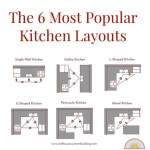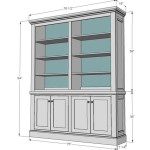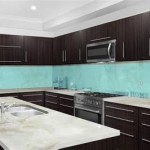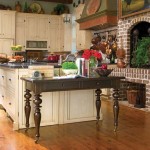Kitchen Exhaust Vent Cover: Everything You Need to Know
A kitchen exhaust vent cover is a critical component of a home’s ventilation system, serving as the termination point for the kitchen range hood exhaust duct. Its primary function is to protect the ductwork and the interior of the home from external elements while allowing the efficient expulsion of cooking fumes, grease, and odors. Understanding the nuances of kitchen exhaust vent covers, including their types, materials, installation, and maintenance, is essential for ensuring the longevity and effectiveness of the entire ventilation system.
The importance of a properly functioning kitchen exhaust vent cover extends beyond simply managing cooking odors. It plays a significant role in maintaining indoor air quality, preventing moisture buildup, and reducing the risk of fire hazards associated with grease accumulation. A damaged or improperly installed vent cover can compromise these functions, leading to potential problems such as backdrafting, pest intrusion, and premature deterioration of the ductwork.
Types of Kitchen Exhaust Vent Covers
Kitchen exhaust vent covers are available in various designs, each offering specific advantages and addressing different installation requirements. The selection of the appropriate type depends on factors such as the location of the vent (wall-mounted versus roof-mounted), the local climate, and the desired aesthetic.
Wall-Mounted Vent Covers: These are the most common type and are typically installed on an exterior wall of the house. They generally feature a damper system that opens when the range hood is in operation and closes when it is off, preventing backdrafts. Wall-mounted vent covers are relatively easy to install and maintain. Some models include bird screens to prevent birds and other animals from nesting inside the ductwork.
Roof-Mounted Vent Covers: These are installed on the roof and are often used when a direct wall exhaust is not feasible or desirable. Roof-mounted vent covers require careful installation to prevent leaks. They are typically designed with a rain cap and a bird screen to protect the ductwork from the elements and pests. These types of vent covers may require professional installation due to the complexity of roof work.
Box-Style Vent Covers: These provide a more discreet appearance and are often favored for aesthetic reasons. They are typically wall-mounted and feature a box-like enclosure that conceals the vent opening. Box-style vent covers can be more prone to grease buildup and may require more frequent cleaning.
Louvered Vent Covers: These feature a series of angled blades that allow air to exhaust while providing some protection from rain and snow. Louvered vent covers are often used in conjunction with a damper system to further prevent backdrafts. The louvers can sometimes become clogged with grease and require periodic cleaning.
Damperless Vent Covers: These rely on a non-restrictive design to allow exhaust air to flow freely. While they eliminate the potential for damper malfunctions, they may be more susceptible to backdrafts and pest intrusion. These are less common than vent covers with dampers.
Materials Used in Kitchen Exhaust Vent Covers
The material used to construct a kitchen exhaust vent cover significantly impacts its durability, resistance to corrosion, and overall lifespan. Common materials include galvanized steel, stainless steel, aluminum, and plastic. Each material offers a different balance of cost, performance, and aesthetics.
Galvanized Steel: This is a common and relatively inexpensive option. Galvanized steel is coated with zinc to protect it from rust. However, the zinc coating can degrade over time, especially in coastal environments or areas with high humidity. Galvanized steel vent covers typically require periodic painting or coating to prevent corrosion.
Stainless Steel: This is a more durable and corrosion-resistant option compared to galvanized steel. Stainless steel vent covers are more expensive but can last much longer, even in harsh environments. They are also easier to clean and maintain. Stainless steel is a popular choice for homeowners seeking a long-term solution.
Aluminum: This is a lightweight and rust-resistant material. Aluminum vent covers are often less expensive than stainless steel but more durable than galvanized steel. They are a good option for homeowners looking for a balance of cost and performance. Aluminum can be prone to denting, though.
Plastic: Plastic vent covers are the least expensive option. While they are resistant to rust, they are less durable than metal options and can become brittle over time, especially when exposed to sunlight. Plastic vent covers are typically used in lower-end installations or as a temporary solution.
Installation and Maintenance of Kitchen Exhaust Vent Covers
Proper installation and regular maintenance are crucial for ensuring the optimal performance and longevity of a kitchen exhaust vent cover. Incorrect installation can lead to air leaks, backdrafts, and premature failure of the vent cover. Neglecting maintenance can result in grease buildup, pest infestations, and reduced airflow.
Installation: The installation process varies depending on the type of vent cover and the location of the exhaust duct. Wall-mounted vent covers typically require drilling holes in the exterior wall and securing the vent cover with screws. Roof-mounted vent covers require more specialized skills and tools to ensure a watertight seal. It is essential to follow the manufacturer's instructions carefully and to use appropriate sealant and flashing materials to prevent leaks. In some cases, professional installation is recommended, especially for roof-mounted vent covers.
Cleaning: Regular cleaning is essential to remove grease and debris that can accumulate on the vent cover. Grease buildup can restrict airflow and create a fire hazard. The frequency of cleaning depends on the amount of cooking done and the type of food prepared. At a minimum, the vent cover should be cleaned every few months. To clean the vent cover, remove it from the wall or roof and soak it in hot, soapy water. Use a brush to scrub away any grease or debris. Rinse the vent cover thoroughly and allow it to dry completely before reinstalling it.
Inspection: Periodically inspect the vent cover for signs of damage, such as cracks, rust, or loose dampers. Repair or replace the vent cover as needed to prevent further damage and maintain its functionality. Check the bird screen for any tears or holes and repair or replace it as necessary to prevent pest intrusion.
Damper Maintenance: If the vent cover has a damper, ensure that it is functioning properly. The damper should open and close freely without sticking. If the damper is sticking, lubricate it with a silicone-based lubricant. If the damper is damaged, it may need to be replaced.
Sealing: Inspect the seal between the vent cover and the wall or roof. If the seal is cracked or damaged, replace it with new sealant to prevent air leaks and water intrusion. Use a high-quality sealant that is designed for exterior use.
Choosing the right kitchen exhaust vent cover involves considering several factors, including the type of exhaust system, the climate, and the budget. By understanding the different types of vent covers, materials, and installation and maintenance requirements, homeowners can select a vent cover that will provide reliable performance for years to come.
Ensuring proper ventilation in the kitchen is not just about comfort, it is about safety and maintaining the structural integrity of the home. A well-maintained kitchen exhaust vent cover is a key element of a healthy and safe home environment.
When selecting a replacement vent cover, consider upgrading to a more durable material or a design that is easier to clean. Investing in a higher-quality vent cover can save time and money in the long run. Furthermore, ensure that the new vent cover is compatible with the existing ductwork and ventilation system.

How I Built My Diy Farmhouse Vent Hood Cover

Makeup Air For Kitchen Exhaust Greenbuildingadvisor

How I Built My Diy Farmhouse Vent Hood Cover

How I Built My Diy Farmhouse Vent Hood Cover

How To Install A Kitchen Vent Hood Insert W S And Pics Complete Guide

Kitchen Vents Lambro Industries

How I Built My Diy Farmhouse Vent Hood Cover

Diy Range Hood Cover With Storage

Kitchen Ventilation Code What You Need To Know Hunker

How I Built My Diy Farmhouse Vent Hood Cover
Related Posts








